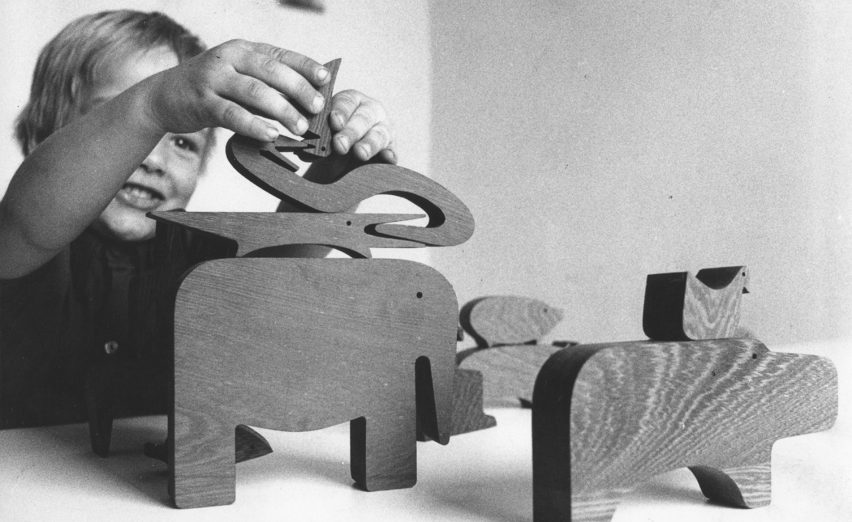
Nine designs that demonstrate the variety of Enzo Mari's works
Following the death of Italian designer Enzo Mari last week, the curators of a major retrospective of his work at the Triennale Milano, Hans Ulrich Obrist and Francesca Giacomelli, pick nine designs that demonstrate the variety of his work.
Mari, who passed away from complications related to coronavirus on 19 October, has an extensive and varied body of work including art, furniture design and children's toys created over a prolific, 60-year career.
Around 250 of his designs are currently on show at the Triennale Milano museum as part of a retrospective entitled Enzo Mari curated by Hans Ulrich Obrist with Francesca Giacomelli.
This archive of Mari's work is set to be donated by the designer to the city of Milan. However, a condition of his donation means that the items can not be shown for another 40 years, meaning this retrospective could be the last time to view some of the objects.
Below the curators, Obrist and Giacomelli, pick nine of the designer's pieces from the exhibition.
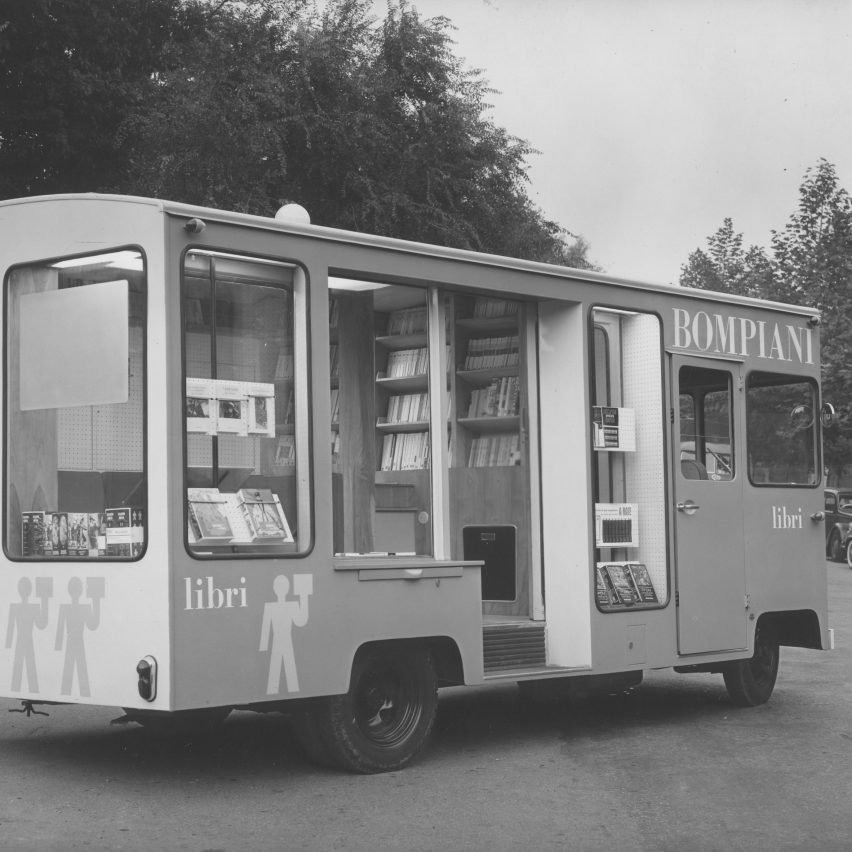
Hans Ulrich Obrist: Travelling bookcase for Bompiani, 1956
"I chose the travelling bookcase because they are, in fact, exhibitions for books, showing ways to think about books spatially," said Obrist.
"As Anthony Powell wrote: 'Books Do Furnish a Room'."
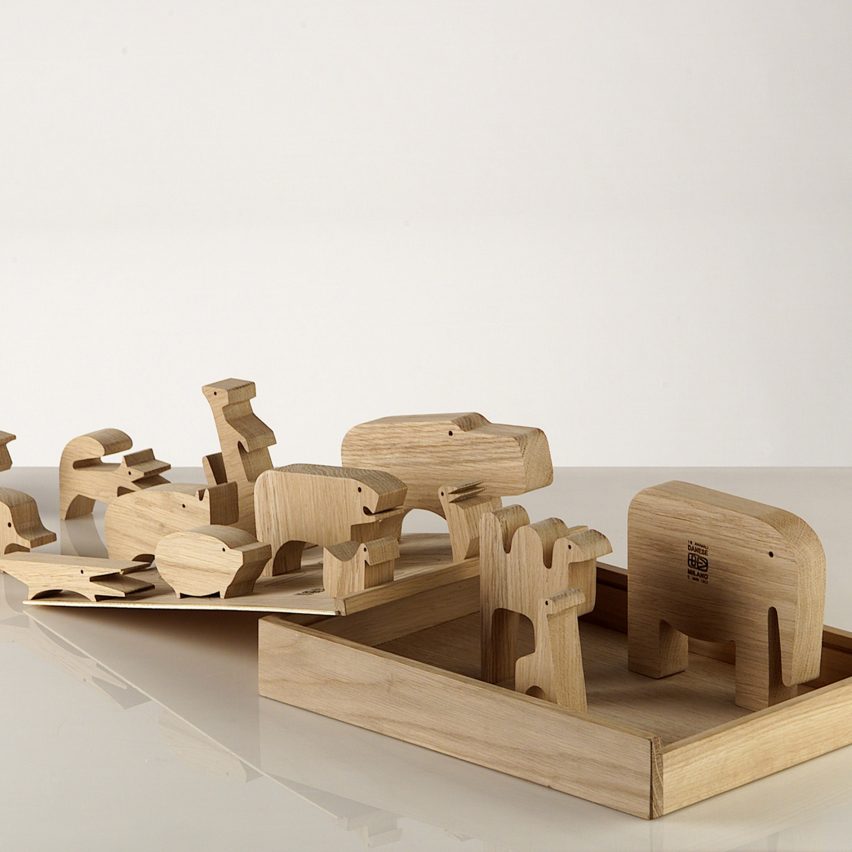
Hans Ulrich Obrist: 16 Animali for Danese Milano, 1957
"One of Mari's first objects for Danese Milano was immediately put into production, even though there was no market for it and Danese had no intention of developing products for children at the beginning," said Obrist.
"A generation of children in Italy grew up with these extraordinary toys. The idea of access to great design is always at the core of his work, as well as how this access can positively affect our relationship to objects."
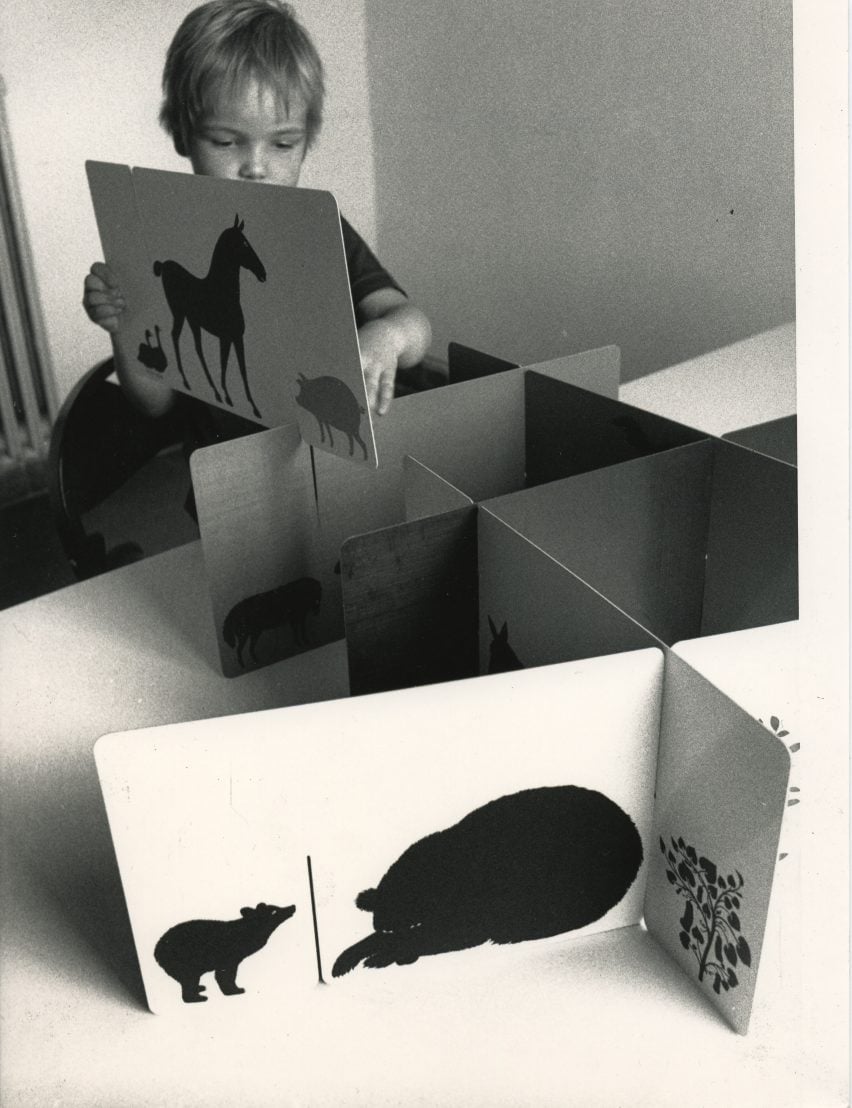
Francesca Giacomelli: The fable game for Danese Milano, 1957
"In Mari's vision, design aimed at the creation of toys for children must take into account the sacred ritual of unrestrained fantasy," said Giacomelli.
"For children, self-designing their own universe with its unique set of rules, inventing a personal alphabet, and creating codes instrumental to the narration of their systems, are actions that initiate an evolutionary journey that will lead them, as adults, to envision a project for a new world, and perhaps, even a new society," continued Giacomelli.
"With this project, Mari did not make the mistake of recreating a microcosm of everyday life with its tools and miniature cities to train children to become alienated adults," she continued.
"On the contrary, he invented a boundless game based on freedom and space appropriation," she added.
"While piecing together a story using their imagination, children see their creativity manifest itself in a tangible structure, a maze-like jigsaw puzzle filled with images and symbols through which they can explore the fable they created in all its parts."
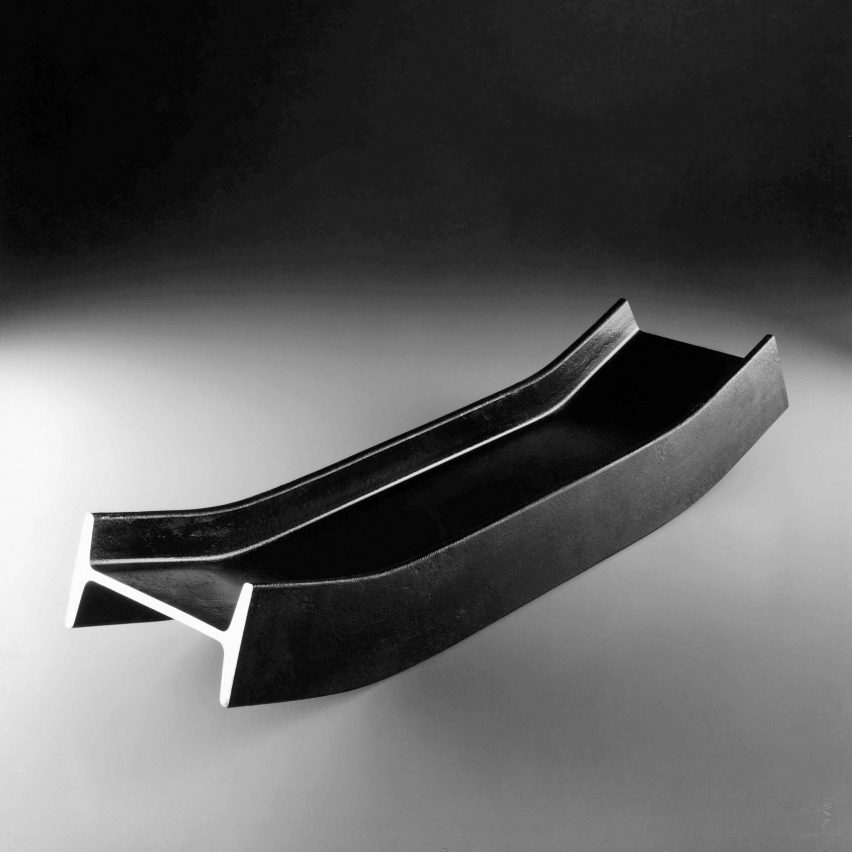
Francesca Giacomelli: Putrella Series for Danese Milano, 1958
"This was Mari's first design project," said Giacomelli.
"His research started from semi-finished products: structural steel and iron section bars. In the Ferri Saldati Series, the economical quality of technology guided the working of the material: the machine cutting structural sheet sections and the worker's hand welding the parts together without removing imperfections and burrs," she continued.
"Mari wanted to transform imperfection such as a brass weld-seam with no surface finishing into a decorative element, into a positive quality," she continued.
"In the Putrella Series, Mari developed research on iron section bars; the formal combinations and functional solutions were inspired by the shapes obtained from the various sections: this was exactly the formal worth of semi-finished products that Mari wanted to highlight," she added.
"One of these models was the Putrella: an iron I-beam section where the designer's intervention consisted of slightly bending the extremities upwards, thus creating a bowl. "
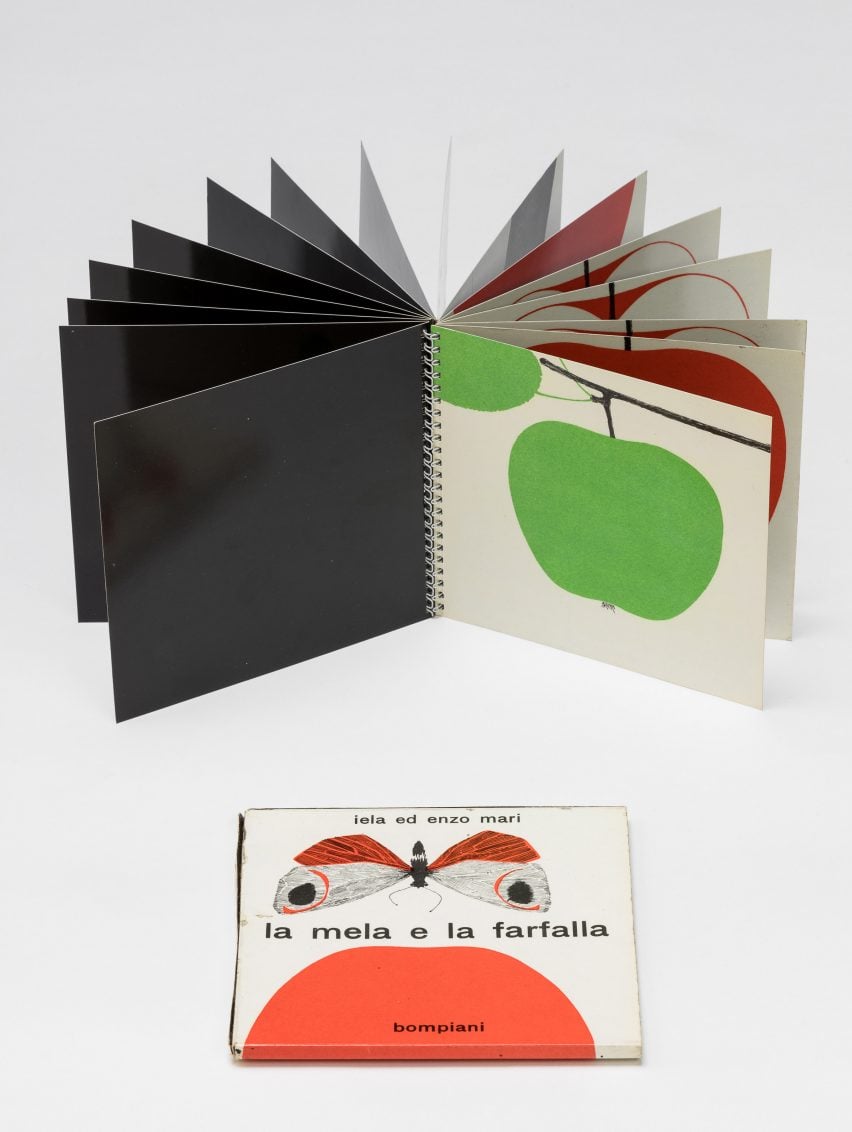
Francesca Giacomelli: La mela e la farfalla for Bompiani, 1958
"To help children discover and understand reality around them, Enzo Mari and Iela Mari, the authors of La Mela e la Farfalla and L'uovo e la gallina, created a series of illustrated books about nature and its cycles," said Giacomelli.
"Intended for children who still do not know how to read, these books contain no text. In their first edition, these booklets came in the size of an apple," she continued.
"In the framework of a technological civilisation that violates and hides the primordial elements of nature – hence of life – and disrupts and modifies its rhythm and cycles, before designing any learning tools we must first design poetic tools that children may use to understand the reality around them," she continued.
"In its first edition, the book La Mela e la Farfalla has no cover, since it has no beginning and no end – just like the cycle of nature, the sequence of the seasons, birth, life and death."
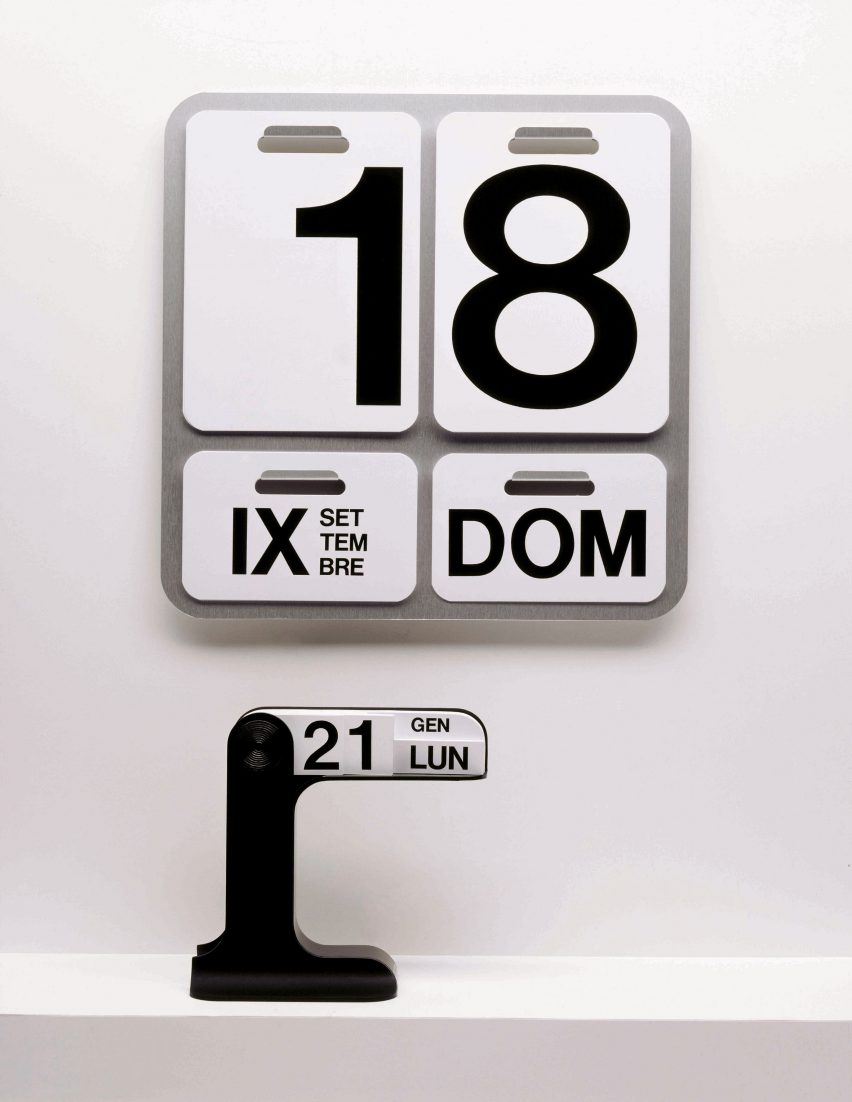
Hans Ulrich Obrist: The Calendar Formosafor Danese Milano, 1963
"This is a modular object without saints' days or the rotational ritual linked to the end of the year when we replace our old calendar with a new one," said Obrist.
"I chose it because I live with it every day. It's a non-disposable calendar. It's forever."
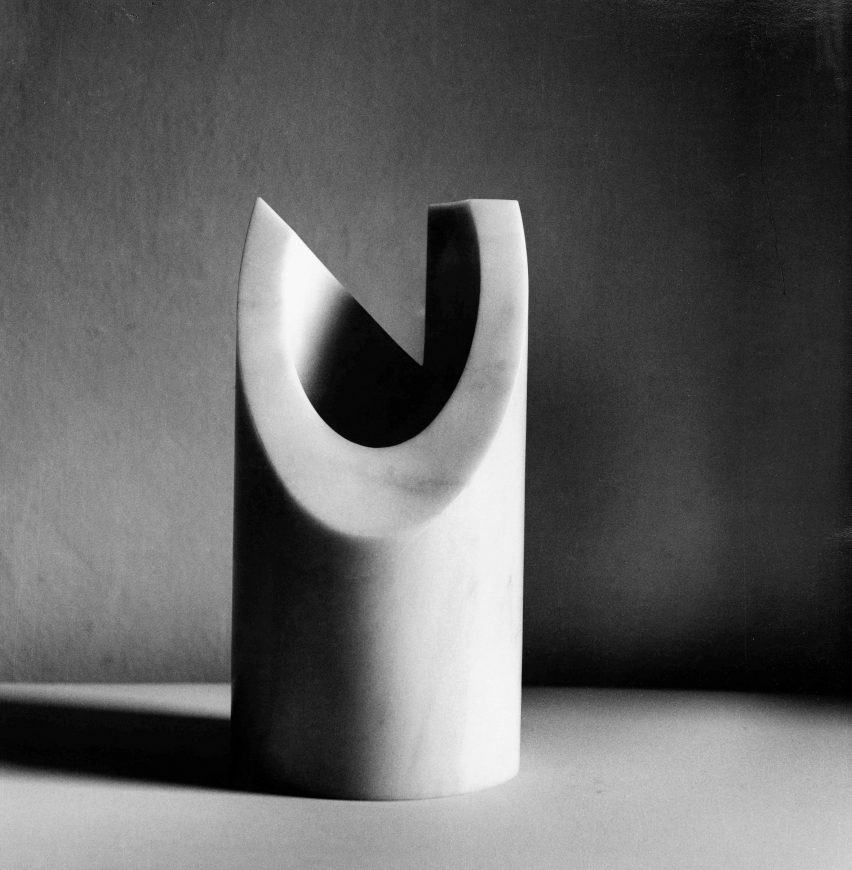
Hans Ulrich Obrist: Marble vase from the Paros series for Danese Milano, 1964
"In my conversations with Mari about his work and engagements in the 1960s, I learned about his connection to communism and the Arts and Crafts movement, and how he always saw design as inherently political," said Obrist.
"I began to understand how many dimensions there are to his work: he's an industrial designer, a furniture designer, an exhibition-maker, an artist, a manifesto-writer, a polemicist especially famous for his rages against the design world."
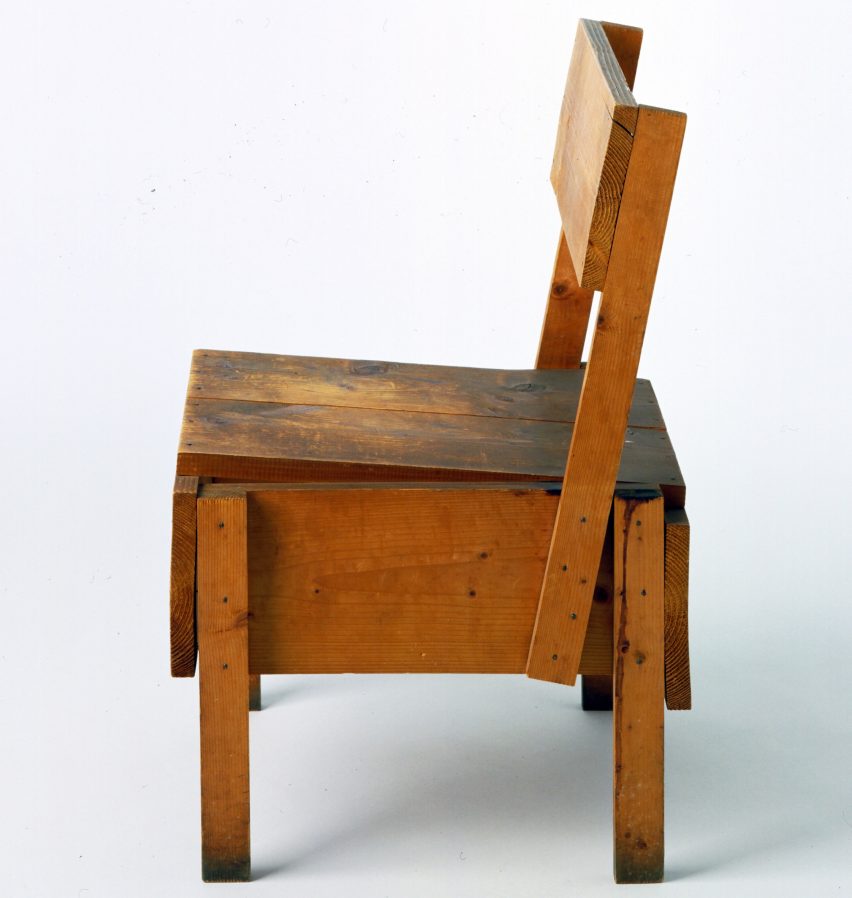
Hans Ulrich Obrist and Francesca Giacomelli: Autoprogettazione / Self-design proposal, 1973
"The Autoprogettazione it was not only the idea of democratisation of design, which is of course very historic, but I think what is striking is this idea of knowledge production that he wanted to carry out to improve one person understanding," said Obrist.
"It was almost as a school, a DIY school for design," he added.
"It a critical exercise in design, the apotheosis of the utopian drive that animates all of Mari's projects: the epiphany of project socialisation," said Giacomelli.
"For this reason, the experiment, the exercise that the project suggests has been called self-design and not self-making. This exercise proposal is the bearer of a liberating value; it is a potential tool of socialised knowledge, it reacts caustically to a civilisation of waste and its ritual of planned obsolescence," she continued.
"Every individual who accepts the invitation to the self-design experiment must not simply replicate Mari's models, but should introduce changes; by self-producing these furniture pieces, users will understand the issues connected to the design process, improving their capacity of critical evaluation of industrially produced objects."
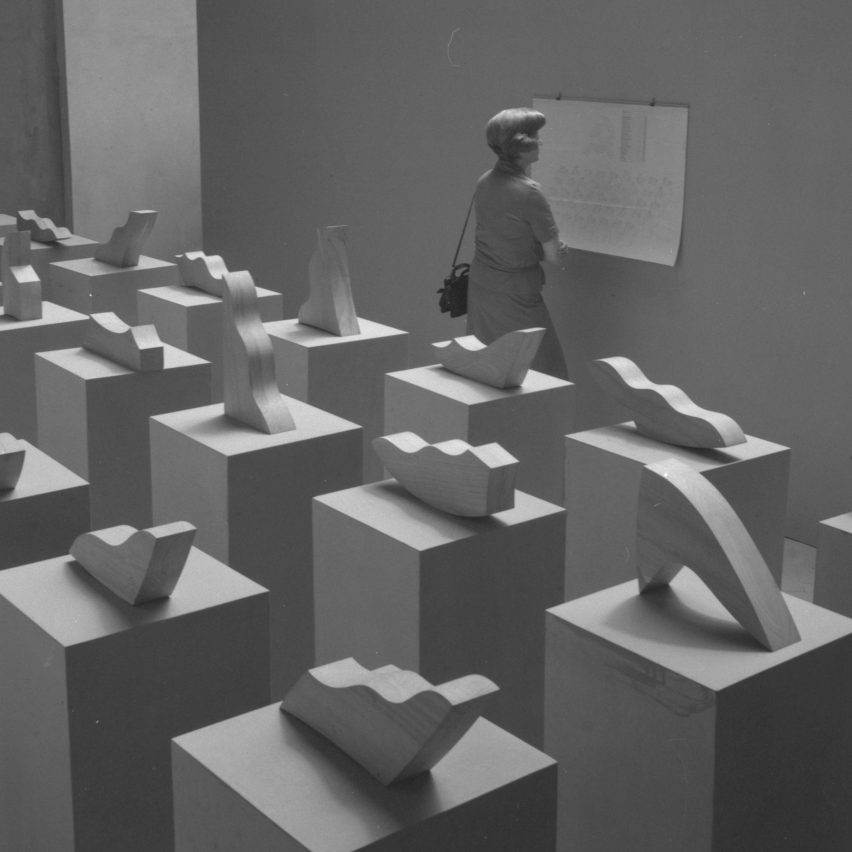
Francesca Giacomelli: Allegory: 44 valutazioni, 1977
"In this Allegory, the symbol of the hammer and sickle is broken into 44 pieces, each of which displayed on a plinth and accompanied by a poem by Francesco Leonetti, also composed of 44 lines representing the titles of the corresponding shapes, indicating their market value," said Giacomelli.
"The work is not limited to this hint of sarcasm regarding the arbitrary nature of markets but also evokes the themes of fragmentation and ideological reconstruction, of form, and also of the proletariat," she continued.
"The broken symbol is that of work, the allegory of the ideology in which he believes and to whose poetics he remains true. Allegorical fragments of a single project to which he had devoted his whole life, as he said: 'I have devoted my life, and will continue doing so, to a single project' in the hope of 'transforming the world'."
Enzo Mari curated by Hans Ulrich Obrist with Francesca Giacomelli is on view at Triennale Milano in Milan from 17 October 2020 to 18 April 2021. See Dezeen Events Guide for an up-to-date list of architecture and design events taking place around the world.